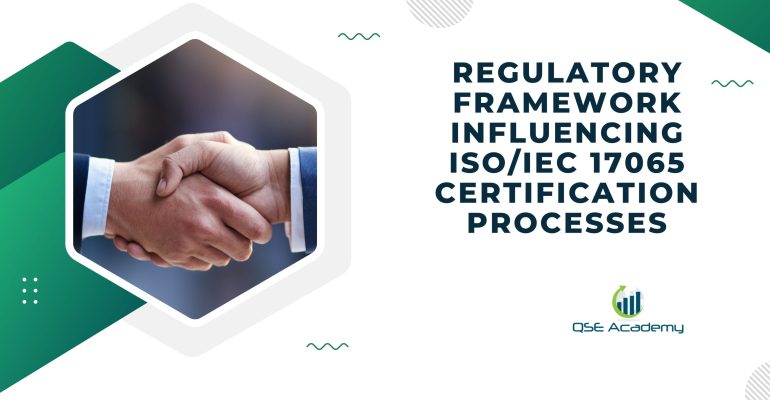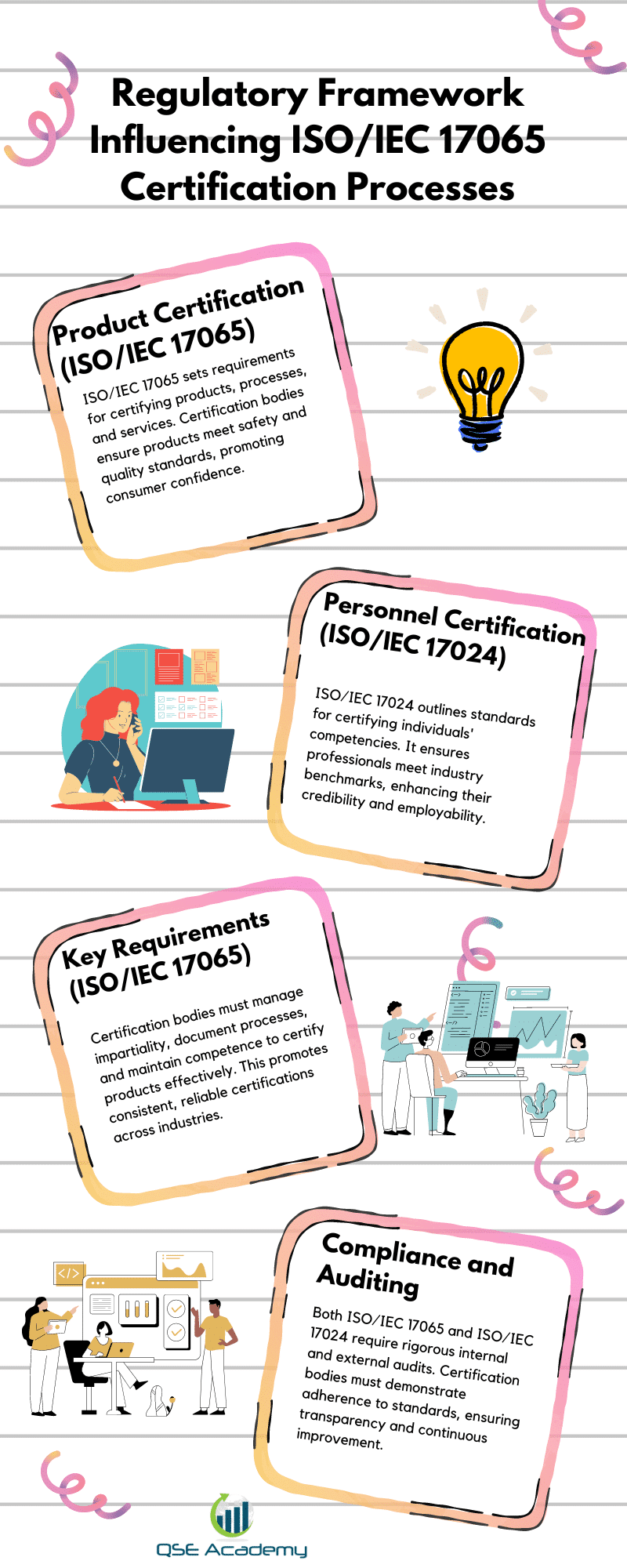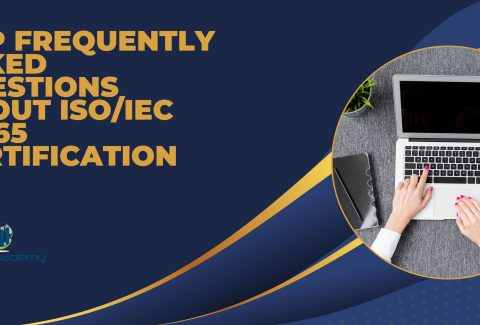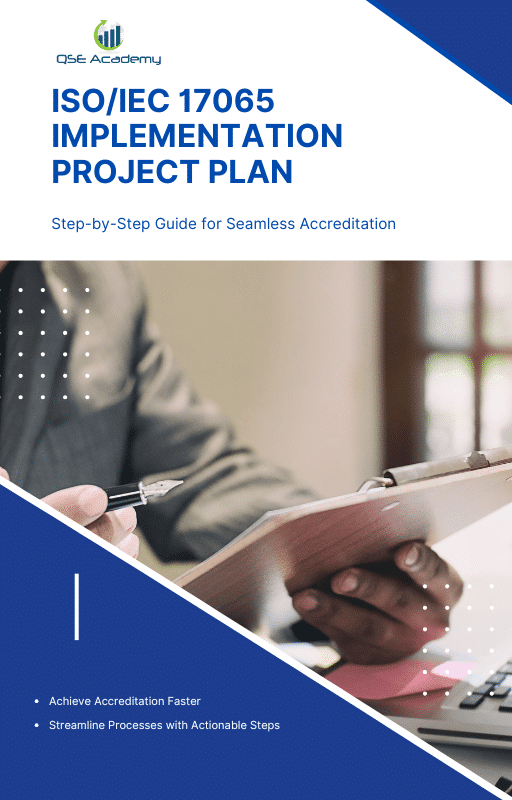Regulatory Framework Influencing ISO/IEC 17065 Certification Processes

Regulatorischer Rahmen, der die Zertifizierungsprozesse nach ISO/IEC 17065 beeinflusst
In the intricate dance of global trade and market credibility, ISO/IEC 17065 certification emerges as a pivotal standard for product certification bodies. Behind every certification lies a complex regulatory framework, ensuring that products and services meet stringent requirements. While the standard aims to breed confidence and reliability, navigating the labyrinth of regulatory influences is a task of Herculean proportions.
ISO/IEC 17065, while not a household term, acts as the invisible backbone to consumer trust, safeguarding the integrity of certified products worldwide. The regulatory frameworks in question act as watchful guardians, dictating the when, how, and why of compliance. Yet, the intersection between ISO/IEC 17065 and these frameworks is often shrouded in mystery, accessible mainly to those with legal and technical expertise.
This article seeks to demystify the regulatory framework influencing ISO/IEC 17065 certification processes and to guide stakeholders through the opaque vistas of legal and contractual requirements. Join us as we explore the central regulations, their impact on compliance and auditing, and share best practices for successfully navigating these waters, illustrated through real-world case studies.
Einführung
ISO/IEC 17065, formerly known as ISO Guide 65, sets the requirements for bodies certifying products, processes, and services. In the ecosystem of international standards, ISO/IEC 17065 serves as a pivotal document that guides certification bodies on how to manage the process of certification in a competent, consistent, and impartial manner. Its scope extends to all organizations conducting product certification irrespective of the sector, ensuring that they operate in an ethical and systematic way.
The significance of ISO/IEC 17065 lies in its ability to inspire confidence among stakeholders, consumers, and regulatory authorities in the certification process and the certified products. By adhering to this standard, certification bodies demonstrate their capability to enforce certification schemes effectively, which focuses on safety, quality, and performance parameters of products.
The formulation of ISO/IEC 17065 has been an iterative process, evolving alongside advances in product certification methods and global trade. Adopted initially as a guide, it has grown into a fully-fledged ISO standard, reflecting a consensus among international experts to harmonize the accreditation requirements and enhance the credibility of certification activities worldwide.
Verstehen der ISO/IEC 17065
The ISO/IEC 17065 standard sets out the requirements for bodies certifying products, processes, and services. Its central purpose is to ensure that the certification process is carried out in a consistent, comparable, and reliable manner, thereby enhancing the quality and safety of certified products for consumers and promoting confidence in the marketplace.
One of the key objectives of ISO/IEC 17065 is to promote uniformity in the certification process. This international standard helps certification bodies to operate in a competent and impartial way, which is crucial for maintaining the integrity of the certification itself. Adoption of ISO/IEC 17065 ensures that a certification body is capable of managing conflicts of interest and is consistently applying its certification activities within its defined scope of accreditation.
The scope of ISO/IEC 17065 extends across a wide array of industries and product types, confirming its versatility and applicability. This widespread use reinforces the value of the certification to regulatory authorities, consumers, and suppliers. Among the stakeholders involved are the certification bodies themselves, the accreditation bodies overseeing their conformity with the standard, the organizations seeking certification, and the end-users relying on the assurances the standard provides.
- Key Terms: ISO/IEC 17065, quality, safety, certification process, uniformity, industries, stakeholders, accreditation bodies, regulatory authorities, consumers, suppliers
Überblick über den Rechtsrahmen
International Regulatory Bodies
ISO/IEC 17065, established by the International Organization for Standardization (ISO) and the International Electrotechnical Commission (IEC), sets requirements for bodies certifying products, processes, and services. For certification bodies to grant ISO 17065 certification, they must conform to its stringent procedures and protocols, ensuring a consistent benchmark for product certification internationally.
Regional Regulatory Frameworks
Different regions may integrate ISO/IEC 17065 within their regulatory landscapes to harmonize certification processes. For example, the European Union (EU) recognizes the standard under the New Approach Directives for product conformity. In North America, the NAFTA partners often reference international standards to facilitate trade, while ASEAN countries are aligning their accreditation systems with ISO/IEC 17065 to enhance market integration.
National Regulatory Bodies
National regulatory authorities can enforce the application of ISO/IEC 17065 as part of their regulatory requirements for product certification. They may adopt the standard directly, tailoring the certification and accreditation processes to their local context. Examples include countries like the U.S., which have developed sector-specific scheme requirements and Australia, which incorporates ISO/IEC 17065 in the WaterMark Certification Scheme for plumbing and drainage products.
Key Regulations Influencing ISO 17065
ISO/IEC 17065 outlines requirements for bodies certifying products, services, and processes. However, implementation of these conformity assessment activities must also consider various regulatory frameworks that influence certification bodies.
- General Product Safety Regulations: Certification bodies must align with regulations like the EU General Product Safety Directive or the US Consumer Product Safety Improvement Act. These ensure certified products meet stringent safety criteria.
- Industry-Specific Regulations: Different sectors, such as medical devices, electronics, and automotive, have unique regulations. Certification bodies like those accredited to ISO/IEC 17065 must understand and adhere to these specific compliances to ensure the certification of products is valid and reliable.
- Environmental and Sustainability Regulations: Standards such as RoHS, REACH, and WEEE address environmental concerns. Certification processes under ISO/IEC 17065 are influenced by these norms, steering towards sustainable and environmentally friendly products.
- Quality and Management System Standards: ISO/IEC 17065 integrates with standards such as ISO 9001 for quality management systems and ISO 14001 for environmental management. This harmonization encourages excellence in quality and environmental management within certification activities.
Each of these regulatory areas impacts ISO/IEC 17065 certification processes by setting boundaries and expectations for certification bodies, ensuring they operate within internationally recognized frameworks and contribute to the safety, sustainability, and quality of certified products.
Legal and Contractual Requirements
Legal Status and Liability of Certification Bodies:
Certification bodies engaged in conformity assessment activities under ISO/IEC 17065 must have a well-defined legal status to operate responsibly within the regulatory framework. These bodies bear legal obligations and responsibilities for their operations, ensuring they act impartially and with due diligence in the certification of products. They must also have liability and risk management strategies in place to safeguard against legal issues arising from certification activities. Proper risk assessment and insurance are crucial for protecting the body, its stakeholders, and clients.
Contractual Agreements with Clients:
A fundamental aspect of ISO/IEC 17065 is the establishment of contractual agreements between certification bodies and their clients. These contracts must cover essential elements such as:
- Scope of certification;
- Rights and duties of both parties;
- Certification processes and conditions;
- Certification scheme requirements;
- Use of certification marks and logos.
In addition to these elements, certification bodies must include confidentiality and data protection clauses to ensure the security of client data. These clauses highlight the commitment to privacy and safeguard sensitive information from unauthorized access or disclosure, aligning with relevant ISO/IEC Guide and normative documents.
Overall, certification bodies must take both their legal status and the binding agreements with clients seriously, maintaining high standards of operational integrity and trust.
Compliance and Auditing
Compliance with the ISO/IEC 17065 requires certification bodies to conduct internal audits, a critical mechanism for ensuring ongoing conformity to international standards. Through careful planning, these audits help in identifying non-conformities within certification processes. When such non-conformities are flagged, certification bodies must promptly address them through corrective actions, or implement preventive actions to mitigate future risks.
Interne Audits:
- Plan and conduct routine audits.
- Assess compliance with normative documents and scheme requirements.
- Identify and address non-conformities efficiently.
External audits and regulatory inspections are conducted by accreditation bodies to maintain the credibility of ISO/IEC 17065 compliance. These may also include peer assessments under certification agreements. Certification bodies should be well-prepared for these by having thorough documentation and records. Inspections often reveal common issues related to documentation, quality management systems, and the certification process itself, which can be opportunities for continuous improvement.
External Audits and Regulatory Inspections:
- Complete readiness with clear documentation and compliance evidence.
- Welcome feedback and implement continuous improvement.
- Engage in corrective and preventive measures following external feedback.
Best Practices for Navigating Regulatory Frameworks
To effectively navigate the complex regulatory frameworks that govern ISO 17065 certification, entities must adopt best practices that ensure they stay informed and compliant.
Staying Informed on Regulatory Changes
- Monitoring Updates: Regularly check for updates from regulatory authorities and accreditation bodies to ensure the latest requirements are met.
- Engaging with Networks: Participate in industry associations and professional networks to exchange information and best practices regarding ISO/IEC 17065 and related standards.
Building a Robust Compliance Program
- Developing Programs: Establish a comprehensive compliance program that covers all aspects of the certification processes, from application to certification decisions.
- Training Staff: Ensure continuous training and competence development for staff involved in certification activities, including internal audits and management reviews.
Leveraging Technology for Compliance Management
- Compliance Software: Implement compliance management software to streamline conformity assessment activities and manage certification schemes efficiently.
- Digital Documentation: Maintain digital documents and records to improve traceability and facilitate corrective and preventive actions.
By incorporating these practices, a certification body can maintain a high level of compliance with ISO/IEC 17065 requirements and effectively manage its certification activities, from application forms to issuance of certification marks.
Fallstudien und Anwendungen aus der Praxis
Case Study 1: Navigating Regulatory Challenges in the Electronics Industry
The electronics industry is governed by a complex regulatory framework that ensures product safety and compliance. When an electronics certification body aimed to attain ISO/IEC 17065 accreditation, it encountered challenges with the integration of normative documents into its certification process. By conducting a comprehensive gap analysis and conducting an internal audit, the body tailored its management review processes to meet both the scheme requirements and ISO/IEC 17065 standards. As a result, the quality of certification activities improved, and a robust Certification decision approach was established, enhancing the credibility of certification marks issued under their product certification schemes.
Case Study 2: Ensuring Compliance in the Medical Devices Sector
In the medical devices sector, conformity assessment activities are critical, reflecting stringent regulatory authorities’ demands. A certification body faced challenges aligning with international standards, including ISO/IEC 17065 and the relevant parts of the ISO/IEC 17021 concerning the certification of products. Through meticulous revisions of procedures, a focus on preventive actions and corrective actions, and regular management review meetings, they bolstered their compliance. Subsequent audits highlighted their dedication to upholding high standards, significantly elevating certification quality and meeting the rigorous accreditation requirements of their industry.
Schlussfolgerung
The regulatory framework for ISO/IEC 17065, concerning the “Requirements for bodies certifying products, processes, and services,” is critical for ensuring certification bodies operate with credibility and integrity. As the landscape of international standards evolves, so does the importance of compliance with this framework. Certification bodies must adhere to rigorous accreditation requirements established by accreditation bodies, safeguarding that the certification process—from application to issuance of certification marks—abides by the principles of impartiality, competence, responsibility, openness, confidentiality, and responsiveness to complaints as per scheme requirements.
Key Takeaways:
- Certification bodies must undergo a systematic certification process, which includes a thorough review of their procedures, a detailed internal audit, management review, and corrective and preventive actions.
- These entities are evaluated against normative documents and ISO/IEC 17065 standards by regulatory authorities and accreditation bodies, ensuring practices align with international norms.
- Certification schemes must consistently reflect updates to regulatory standards, with certification activities being relentlessly scrutinized.
- The framework foresees future enhancements with an emphasis on harmonizing global practices and sustaining mutual recognition through Certification agreements, thereby easing the global trade barriers.
Certification decisions remain pivotal, shaping the trust across various markets and sectors. Any entity looking to undergo certification should prepare for an extensive and discerning process, which ultimately benefits both the providers and the end-users by upholding exceptional standards of quality and safety.
Referenzen
References and Further Reading
- Internationale Organisation für Normung (ISO) – ISO/IEC 17065:2012 Requirements for bodies certifying products, processes, and services.
- ISO CASCO – The ISO committee on conformity assessment (CASCO) has a range of supporting documents, such as the ISO/IEC 17000 series which includes ISO/IEC 17065.
- Internationales Akkreditierungsforum (IAF) – Documents related to the application of ISO/IEC 17065, such as mandatory documents, guidance documents, and informative documents.
- National accreditation bodies – Websites and documents from members of the International Laboratory Accreditation Cooperation (ILAC) and International Accreditation Forum (IAF) provide national interpretations and implementations of ISO/IEC 17065.
- ISO/IEC 17025 – Pertinent to testing and calibration laboratories, which may be relevant to certification bodies in the context of product testing.
- ISO/IEC 17021 – Relevant for bodies performing audits and certification of management systems, which can intersect with product certification requirements.
- ISO/IEC-Leitfaden 65 – The predecessor of ISO/IEC 17065, which offers historical context and development of conformity assessment standards.
- ISO/IEC 17020 – For requirements for the operation of various types of bodies performing inspection, potentially relevant to certification bodies.
- Normative documents and scheme requirements – Specific product certification schemes may have additional requirements or modifications to ISO/IEC 17065.
These resources are valuable for any certification body, accrediting body, or professional involved in the certification of products, processes, and services. They ensure understanding and implementation of the ISO 17065 standards and provide the framework for conducting robust and credible certification activities.
Anhang
When navigating the complex landscape of regulatory compliance for ISO/IEC 17065 certification, understanding and utilizing the correct additional resources and tools can facilitate the process for certification bodies. Essential tools include templates and checklists specifically designed to streamline regulatory compliance efforts. These instruments aid organizations in ensuring nothing is overlooked during the preparation for certification or accreditation.
Additionally, the availability of training programs can significantly enhance the knowledge and expertise of those involved in certification processes, particularly in understanding the requirements for bodies certifying products, services, and management systems. Accreditation bodies often provide links to such educational resources, which can be instrumental in comprehending ISO/IEC 17065 as well as related standards like ISO/IEC 17021, ISO/IEC 17025, and ISO/IEC 17020.
For reference, consider the following quick-glance list that certification bodies might find useful:
- Certification process templates
- Management review checklists
- Internal audit checklists
- Scheme requirement documentation
- Application forms
- Corrective and preventive action plans
These items are typically structured to align with international standards and facilitate the certification activities, making the journey towards ISO/IEC 17065 certification more approachable for organizations seeking recognition for quality in their certification schemes.
Suchen Sie weitere Ressourcen zur ISO 17065?
Wenn Sie diesen Artikel als hilfreich empfunden haben, sollten Sie sich unsere Premium-Ressourcen ansehen, die Ihnen helfen, die ISO 9001-Zertifizierung effizient zu erreichen:
- 📦 Vollständiges Dokumentationspaket für ISO/IEC 17065 2012: Sie erhalten alle wichtigen Vorlagen und Dokumente, die Sie für eine schnelle und einfache Umsetzung benötigen.
- 🎓 Online-Kurs zur ISO/IEC 17065 2012 : Nehmen Sie an unserer umfassenden Schulung teil, um die wichtigsten Konzepte und praktischen Schritte zur Zertifizierung zu erlernen.
- 📋 ISO/IEC 17065 2012 Prüfliste: Laden Sie unsere detaillierte Checkliste herunter, um sicherzustellen, dass Sie jeden Schritt des Prozesses berücksichtigt haben.
Diese Ressourcen sind auf Ihre Bedürfnisse zugeschnitten und gewährleisten einen reibungslosen Ablauf der Zertifizierung. Entdecken Sie sie noch heute und kommen Sie Ihrem Erfolg einen Schritt näher!













